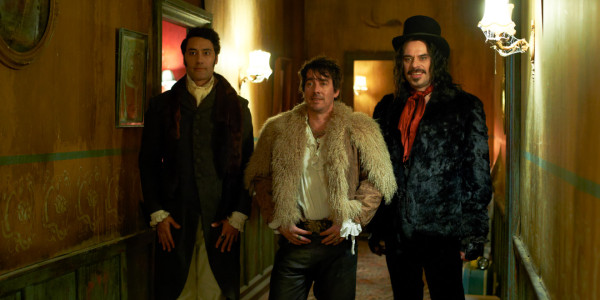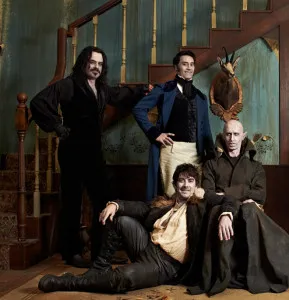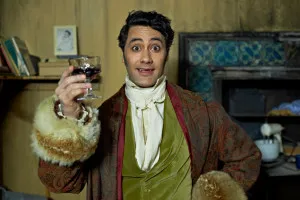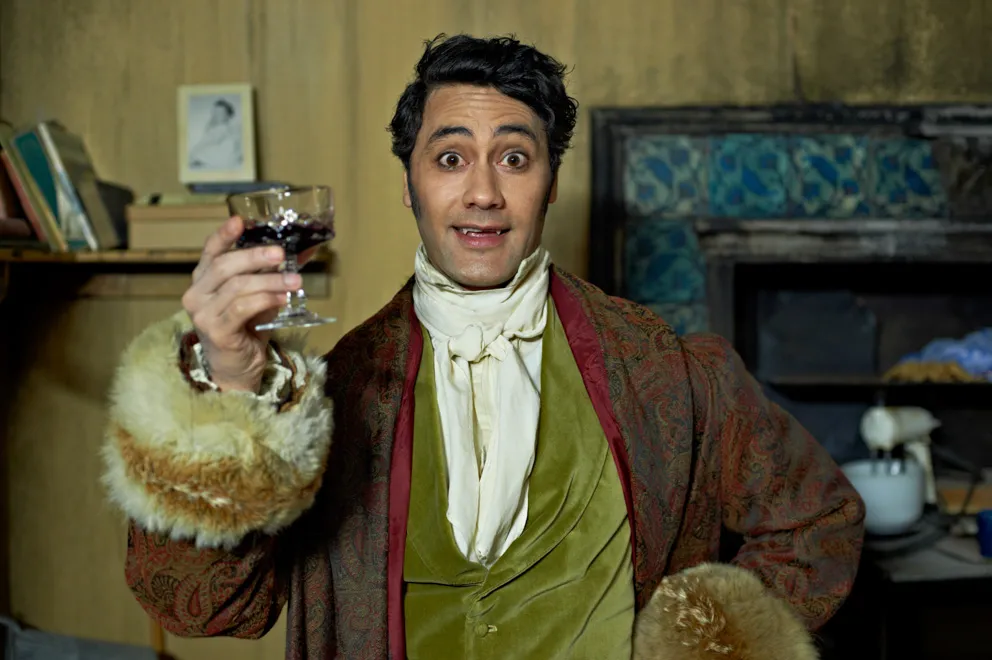
Black comedy at its blackest, “What We Do in the Shadows,” a horror mockumentary from New Zealand’s Taika Waititi and “Flight of the Conchords” co-creator Jemaine Clement, is a biting take on our cultural obsession with vampiric lore. Though frequently hilarious, “Shadows” is so enamored with the cleverness of its own premise — in which a gaggle of Bela Lugosi-esque flatmates allow a film crew to document the mundanity of their undead lives — that it often sacrifices tonal consistency for cheap gags. Veering wildly between the mirthful and the macabre, Waititi and Clement’s latest feature goes down sweet but, in its tonal disjunction, manages to leave a fairly foul aftertaste.
When we first meet the film’s curious flatmates, this tight-knit group comprises four core members. Viago (Taika Waititi), the organizational epicenter of the trio, is a dandy still in love with his human sweetheart — now a nonagenarian. Deacon (Jonathan Brugh), a self-proclaimed ladies’ man, is a hot-headed oaf who can’t seem to manage to pull his weight around the flat. And Vladislav (Jemaine Clement), the most dated of the bunch, is a wounded big shot, still angered by a humiliating defeat at the hands of his arch nemesis, “The Beast.” There’s also Petyr (Ben Fransham) — the group’s oldest member — a spectral monster who communicates largely through grunts and lives in a stone coffin in the basement of the den.

All appears to be going well for this ramshackle band of vampires until the ferocious Petyr leaves the basement and allows a potential victim to become a vampire. This new addition to the clan, a “cool” guy by the name of Nick (Cori Gonzalez-Macuer), intimidates Deacon and angers the group with his relative carelessness. Add in Stu (Stuart Rutherford), Nick’s human friend — an IT specialist who just couldn’t care less about the lifelessness of his only friends — and you’ve got a potent cocktail of petty rivalries and a whole lot of hot crimson just waiting to be spilt.
More often than not, all of this suppressed tension makes for comedic gold. “What We Do in the Shadows” may not be sidesplittingly funny, but Waititi and Clement know the conventions of the vampire flick well and, for the most part, manage to elicit a consistent stream of knowing chuckles. How does a self-respecting vampire dress himself if he can’t see his reflection? How does a vampire — who must be invited in — get into a nightclub? How does one masturbate in a coffin? Waitiki and Clement answer these questions — and more — with gusto. The result is a film that often seems wise beyond its years. Why do vampires like virgins? “If you are going to eat a sandwich you would just enjoy it more if you knew no one had fucked it.” Here is a film with a truly wicked sense of humor.
Unfortunately for “What We Do in the Shadows,” this playfulness is persistently undermined by a series incongruous forays into narrative and comedic cruelty. When Nick, still an unsuspecting mortal, is chased through the halls of the trio’s den, one of the film’s fictitious cameramen follows in earnest, blatantly ignoring Nick’s pleas for a helping hand. Considering the supposed “reality” of the film, this exchange reads as sadistic, not jocular. Directly preceding Nick’s failed escape, however, is a scene in which the vampires use hypnosis to convince Nick that his penis is, in reality, a snake. This egregious juxtaposition reveals a dramatic tonal contrast, one that succeeds in destroying the film’s seeming lightheartedness. The same can be said of Deacon’s introductory monologue, which comically explains the playboy’s Nazi origins. Cutting to an image of Deacon during WWII, Waititi and Clement go for laughs. The joke, however, falls flat. In Waititi and Clement’s hands, the Holocaust is not an unspeakable crime against humanity, but an easy punchline.

The same tonal inconsistency is also evident in the film’s inability to pin down its form. At once a mockumentary and a fairly standard fiction film, “What We Do in the Shadows” is just about as capricious as Benedict Arnold — flip-flopping between these dual modes of storytelling whenever it seems convenient. In one scene, for example, Waititi and Clement kill off an oft-ignored cameraman, effectively acknowledging the filmmaker and, in turn, blatantly reminding us that “Shadows” is, in fact, a mockumentary film. Yet, in a preceding scene — in which the vampires attend a party for the undead — Waititi and Clement clearly ignore the existence of the camera crew in an attempt to propel the film’s narrative forward. As vampires surround the mortal Stu, no one even pretends to acknowledge the fact that there is a whole crew of human filmmakers standing in the wings, unprotected and just waiting to be consumed.
In this regard, “What We Do in the Shadows” reminds me of last year’s “Need for Speed”— a beautifully choreographed and decently executed racing film, and the type of movie that you simply have to accept on its own terms. Either you buy its absurd mess of contradictions and attempt to have a good time, or you question its method and leave the theater lamenting its stupidity. Fortunately, with “What We Do in the Shadows” I was often able to repress my displeasure — though not always — and slip quietly into the former grouping. And, when I was able to do so, I truly enjoyed the film’s many well-informed witticisms.
Contact Will Ferrer at wferrer ‘at’ stanford.edu
